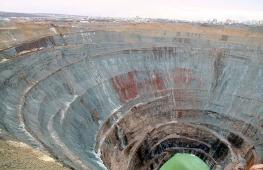Than the joints between the plastic panels are closed. DIY wall panel installation
In this article, we will describe the process of installing panels with our own hands (PVC or MDF). The instruction itself is not considered complicated and can be performed by a person with no knowledge of construction. The main thing is to do everything according to the level so that the walls do not turn out to be crooked.
Instructions
As a rule, installation pvc panels is executed on a lathing lattice from castings of 50 mm x 25 mm. Provided that the surface is suitably prepared, the panels can be attached personally to the wall or ceiling using nails, staples or glue. The battens are fastened at a distance of approximately 0.5 m between themselves using screws or nails. If the panels will be mounted horizontally, then the bars must be located vertically, and vice versa.
For a specific alignment of panels, the bars must be installed on a level. The panels are installed from one of the corners, in which the corner or finishing strip is first attached. If the panels begin to cover the wall up to the ceiling, it is necessary to install a ceiling plinth. Then we install the panel so that a small strip of the panel goes into the corner.
After this, the panel is fastened with nails to the crate for the fastening strip. We mount the upcoming panel, tightly pressing it to the previous one, and in addition we attach it to the crate. Installation lasts until a close opening or corner; in these places you need to install corner or finishing components that come with the PVC panels. The final panel slides into the finishing piece with little effort and snaps into place. The joints between the panels and the floor are covered with a plinth.
Cladding a building with plastic panels is a less complex and more "clean" method of decorating a building. One of the main positive aspects of this finishing material is the highest manufacturability of installation. The assembly is carried out similarly to a childish designer and even an amateur can cope with this task. Another advantage of this finishing technique is the actual inaccessibility of any kind of dirt, dust, waste and other "minor phenomena" when repairs are done with their own hands.
Plastic panels are simply cut both lengthwise and across, as a result of this, there should be no difficulties in adjusting the volumes during installation. From each other, the lining is connected according to the "groove-groove" type. With this type of connection, the jointing may not be similar in color to the panels, or even be mirrored.
Methods for fixing PVC panels

For fixing pvc lining and finishing moldings, use a more successful technique for you. The following are the most well-known fastening methods wall panels:
- self-tapping screws - for fastening the wall panels, a drill is needed to drill the holes, although you can do it without it.
- nails - take on nails with wide heads and anti-corrosion coating. It is inconvenient that the protrusion of the fastening bar is small and broken fingers are guaranteed to you.
- fastening with staples is the most successful method of fastening wall panels, here you need a gun for staples.
- adhesives and mixtures - a controversial method, the reliability of fastening PVC panels cannot be promised for sure.
When installing on vertical planes, fasten the crate for fixing the panels in increments of less than 60 cm; when installing on the ceiling, to avoid sagging, fasten the panel in increments of less than 50 cm. The material is fixed to a cleaned and smooth plane.

The installation process itself is not complicated and can be easily done by hand. Most often, the panels are fastened to a timber sheathing, installed perpendicular to the direction of the panels, with nails, screws or staples using a stapler. If the walls are insulated, then between their surface and the panels are installed one after the other: a vapor barrier, thermal insulation, a windproof membrane.
- First, you need to find the direction of installation of the panels, then strengthen the wood slats on the finished plane at a distance of 30-40 centimeters. to each other perpendicular to the direction of the plastic panels
- Installation of panels begins with the installation of framing accessories, profiles, external and internal corners. It is necessary to insert the first panel into the groove, then leave a gap of 5 mm in the groove. Now you need to make sure that the 1st panel is placed exemplarily exactly to the corner of the plane to be trimmed (use a level or plumb line) and attach the mounting edge of the panel to the slats (after 30 cm) by any of the selected methods.
- Insert the second panel all the way into the groove 1 of the panel and attach its mounting edge in the same way as for panel 1. Subsequent panels are attached in the same way. The final panel should be shortened by 1 centime. from the side of the assembly edge and insert it first into the finishing plane, then push it into the groove of the previous panel. The back panel is not fixed.
- For attaching suspended things to the plane, you need to install an auxiliary crate in the places of their attachment, because the panel has the ability to support a weight of up to 1 kg
- To cut the panel, use a hacksaw for metal or a saw with loose, small teeth.
- It is not recommended to install panels at low temperatures (below 0C).
- Panels and profiles should be unpacked at a temperature of at least 10 degrees Celsius.
- When caring for the panels, use a soft cloth or sponge. Never use abrasive or corrosive cleaners. At the end of the installation, in order to relieve static stress, it is recommended to subject the plane of the panels to an antistatic treatment.
- During operation, it will be necessary to protect the panels from shocks.
Also consider the following rules when installing PVC panels:
- If the plane is uneven, it will be necessary to assemble a trim from wood slats. The slats must be placed perpendicular to the panels. It is advisable to make the distance between the slats - less than 0.5 m. When installing the lining in damp buildings, the lathing had to be treated with a special composition. If the walls are curved, the lathing removes this flaw.
- At the corners, the profile is set, the corner is internal or external. To mask the cuts of panels downwards and cuts in doors, windows, etc., the starting profile is used. When joining the panels along the length, a connecting profile is used. The ceiling plinth is used to design the joint between the wall block and the ceiling.
- DIY installation of pvc panels (panel installation) is recommended to start from the corner. In showers, bathrooms, in wet rooms, we recommend sealing the connection between the starting profile and the rail. Use waterproof silicone or similar sealant to seal.
- Cutting into the lining of switches, electrical outlets, etc., is done using a construction knife, hacksaw or jigsaw. First you need to mark the cutout with a marker.
To carry out installation work, you will need to have the following devices:

- hand saw with vulcanite disc;
- electric drill and drill with carbide tip for dowel diameter;
- hacksaw for wood or metal;
- electric screwdriver or screwdriver;
- building level for leveling the battens of the battens both in the vertical and in the horizontal planes;
- straight rail;
- miter box;
- boot knife;
- alloy scissors;
- hammer and finisher;
- furniture stapler (in case of using connecting brackets 10 mm deep);
- answer;
- pliers;
- ladder or stepladder.
- chalk, pencil;
- roulette;
- screwdriver or electric screwdriver;
- cord;
- square.
- good mood)
Judging by these instructions, we can safely say that the installation process does not require much knowledge in the field of repair. If you decide to do it yourself, then go ahead. The main rule just do not forget: measure once - cut seven times.
Polyvinyl chloride (PVC) panels, which are also called plastic "lining", are used to decorate walls and ceilings in rooms with high humidity levels. This material is used for interior design on terraces, balconies, bathrooms, and kitchens. In order to do such work, it is not at all necessary to involve specialists. If you have the necessary tool and skills to work with it, you can do it yourself.
Benefits of PVC
This material allows you to quickly get a flat surface at a minimum cost. Installation is very easy: if it is necessary to adjust the strip to size, the lining can be cut with a hand saw with fine teeth or with a jigsaw. PVC panels are a relatively cheap finishing material.
Moreover, their decorative qualities are very high due to a wide variety of colors and shades, in addition, their surface can imitate natural materialsuch as marble. Mirror-gold and mirror-silver lining is made.
The sanitary qualities of plastic lining are especially important: its surface is not a habitat for microorganisms and viruses. PVC panels are not damaged by grinder insects and rodents. This material is easy to care for: in order to put it in order, it is enough to wipe the surface with a damp cloth. Chemical detergents other than those containing acetone may also be used. This construction material does not accumulate static electricity, dust does not settle on its surface. Polyvinyl chloride does not emit unpleasant odors, does not emit substances harmful to the human body. It is not afraid of water and temperature extremes, it is inert to most household chemicals.
You can hide electrical wiring under the plastic lining, water pipes and other communications. If necessary, insulation can be placed between the wall and the facing material.
Before installation work, it is not required to level the base (wall or ceiling), dismantle the old finish, which greatly simplifies the repair work.
How to choose a quality lining
The choice of lining should be in accordance with the general concept of interior decoration. In this case, one should take into account the color of the material, its type (PVC panels are of different widths, seamless connections and with a seam).
High-quality material should not have any damage on the front surface (dents, scratches, sagging). Decorative panels should not have any defects in the design on the front side. All panels must be flat: to be sure of this, you need to connect several strips into a lock. If the docking occurs without problems and no distortions are visible, the material is suitable.
You should pay attention to the internal structure of the material: the more transverse bridges in it, the stronger it will be.
Tools and devices required for installation
To revet a wall or ceiling with plastic clapboard, you will need an electric drill or perforator (for attaching the lathing), a hand saw with fine teeth (or jigsaw), a building level, a plumb line, a tape measure, a hammer (or a construction stapler with staples), a construction pencil. A screwdriver, a miter box and a boot knife may come in handy. If you intend to mount panels at a high height, you will need a stepladder.
Installation basics
Most often, PVC panels are attached to a pre-arranged lathing made of wooden slats or bars. The lathing is level and fixed to the wall using dowel-nails or self-tapping screws. It is very convenient to fix with staples using a construction stapler: this greatly simplifies the work and shortens the time for its implementation.
When choosing material for lathing, you should give preference to dry materials. If the slats are supposed to be attached to an external, cold wall, the wood must be treated with an antiseptic compound.
The beams are oriented perpendicular to the position of the panels: if the facing material is installed vertically, the crate is horizontally and vice versa. The distance between the slats is chosen about 0.5 m. In addition to wood materials, metal profiles can be used (if necessary) for the lathing.
When cladding walls, it is important to ensure that the vertical is observed when installing the battens: this is necessary for the correct joining of the panels in the corners. Installation begins from any of the corners, where the finishing strip or corner is first installed. If the panel is to cover the wall to the ceiling, then a special ceiling plinth is attached to the upper part. The panel is installed in such a way that its upper edge fits into the groove of the plinth.
 The material is fastened to the lathing with nails using special staples, but it is allowed to fix the lining without the use of staples. If the lathing is made of metal profiles, self-tapping screws for metal are used. After fixing the first strip, the next one is pressed against it, while its locking part must fit tightly into the counterpart of the adjacent PVC panel. This continues until the entire surface is covered. At the bottom of the wall, near the floor, a plinth is attached.
The material is fastened to the lathing with nails using special staples, but it is allowed to fix the lining without the use of staples. If the lathing is made of metal profiles, self-tapping screws for metal are used. After fixing the first strip, the next one is pressed against it, while its locking part must fit tightly into the counterpart of the adjacent PVC panel. This continues until the entire surface is covered. At the bottom of the wall, near the floor, a plinth is attached.
If the wall surface is perfectly flat, all corners are of the correct shape, then the plastic lining can be glued directly to the wall. For this, "liquid nails" are used: such glue is applied to the back of the panel, which is then pressed tightly against the wall.
Correct installation of PVC panels with careful attitude and proper care will allow the material to serve for several decades.
Video on the installation of PVC panels.



